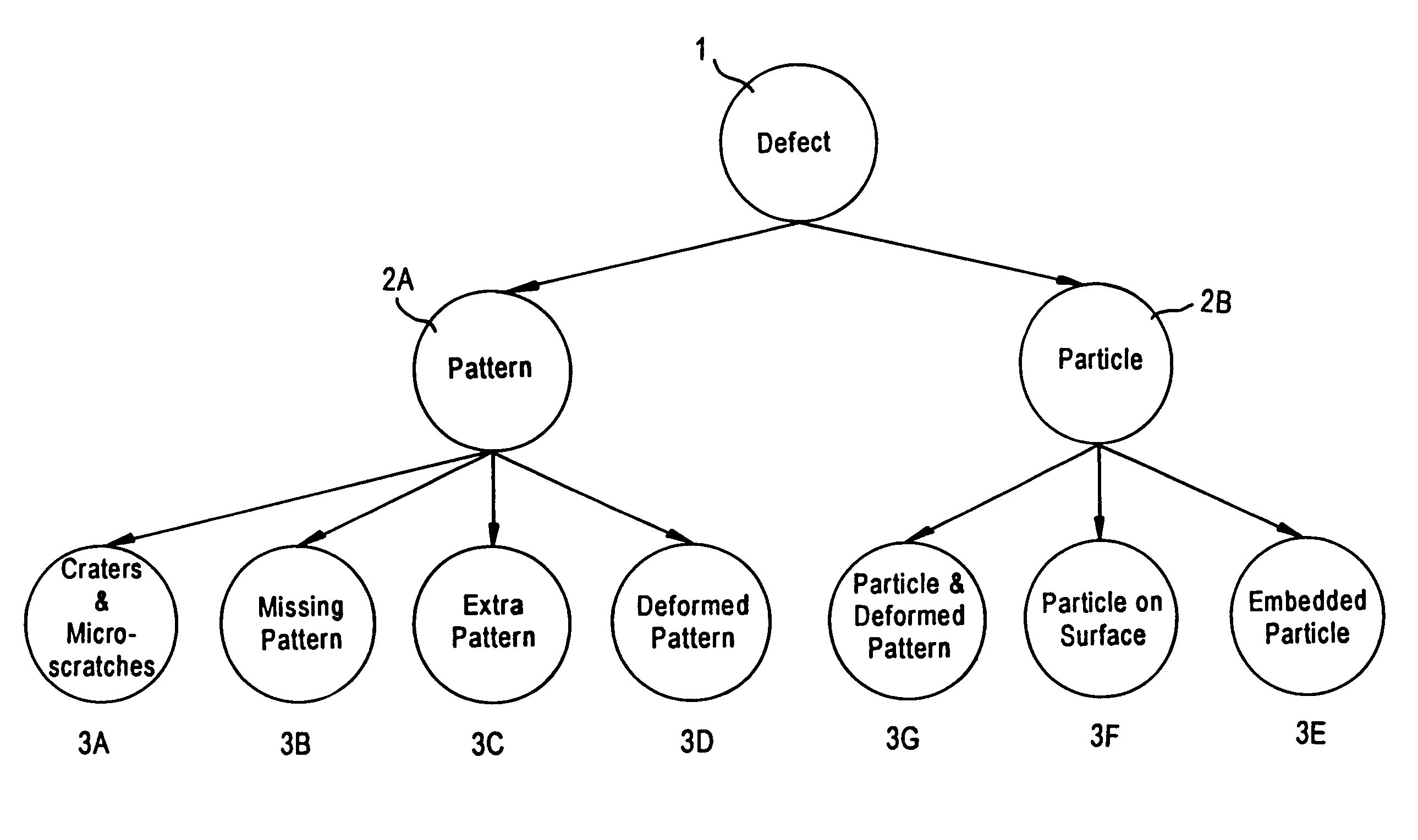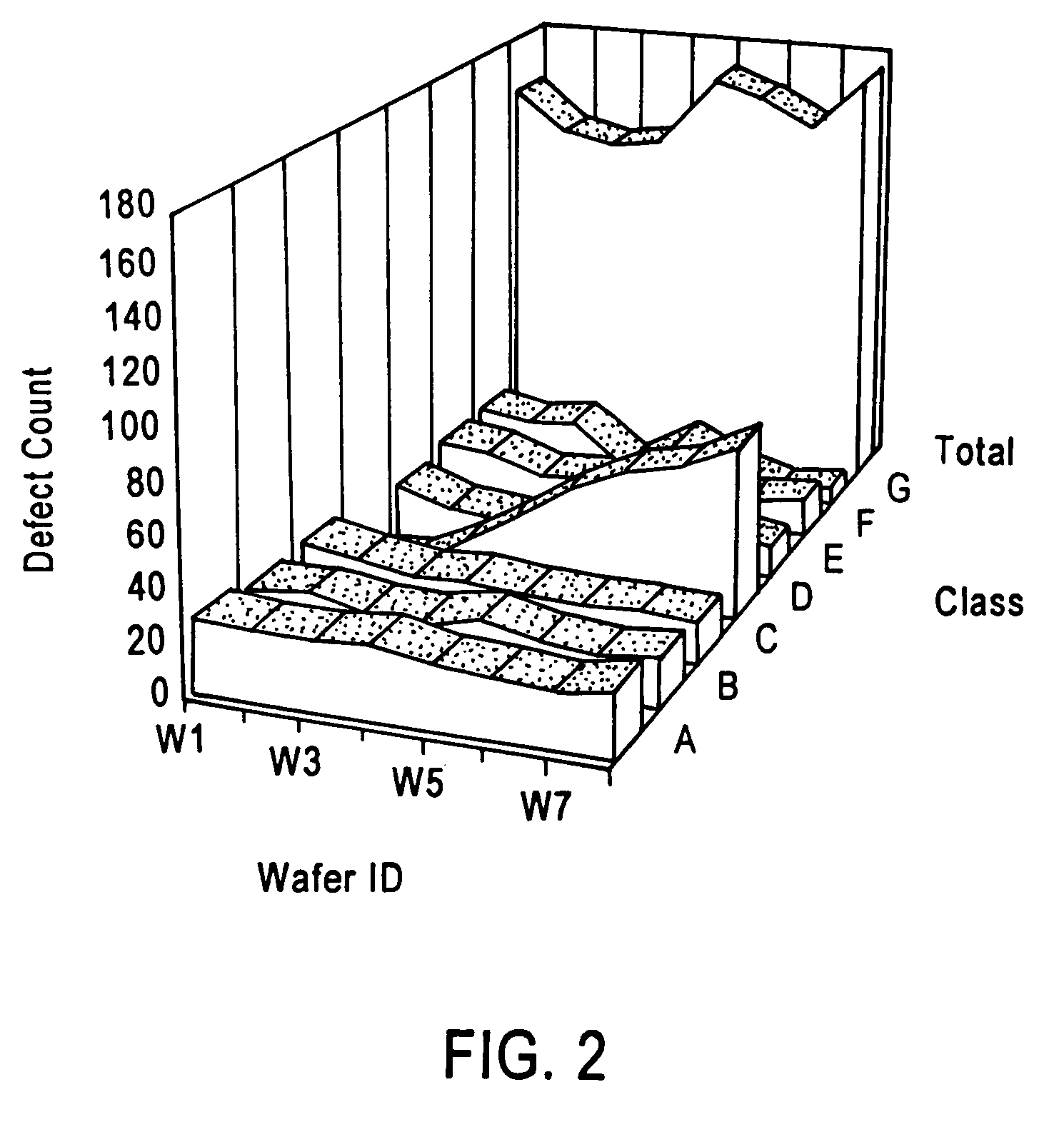Automatic defect classification with invariant core classes
a defect classification and core class technology, applied in the direction of instruments, using wave/particle radiation means, semiconductor/solid-state device testing/measurement, etc., can solve the problems of low manufacturing yield, reduced production throughput, and large undetected defects, and achieve automatic, fast and reliable defect classification.
- Summary
- Abstract
- Description
- Claims
- Application Information
AI Technical Summary
Benefits of technology
Problems solved by technology
Method used
Image
Examples
Embodiment Construction
[0038]Conventional semiconductor wafer inspection techniques do not provide early detection of serious defects, but rather only indicate that a certain amount of defects of all types have occurred. Furthermore, conventional inspection techniques are not capable of analyzing defects in sufficient detail to provide information which leads to early positive identification of the defect source. The present invention addresses and solves these problems by providing automatic classification of defects into meaningful categories, enabling ready identification of processes causing defects, and enabling early corrective action to be taken.
[0039]According to certain embodiments of the methodology of the present invention, after a defect map of a semiconductor wafer has been generated, each defect site and a corresponding known non-defective reference site is imaged by a scanning electron microscope (SEM) to gather and store location and topographical data. This data is then analyzed to classi...
PUM
| Property | Measurement | Unit |
|---|---|---|
| number of defects | aaaaa | aaaaa |
| scanning electron microscope | aaaaa | aaaaa |
| defects | aaaaa | aaaaa |
Abstract
Description
Claims
Application Information
 Login to View More
Login to View More - R&D
- Intellectual Property
- Life Sciences
- Materials
- Tech Scout
- Unparalleled Data Quality
- Higher Quality Content
- 60% Fewer Hallucinations
Browse by: Latest US Patents, China's latest patents, Technical Efficacy Thesaurus, Application Domain, Technology Topic, Popular Technical Reports.
© 2025 PatSnap. All rights reserved.Legal|Privacy policy|Modern Slavery Act Transparency Statement|Sitemap|About US| Contact US: help@patsnap.com



